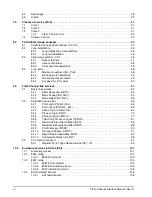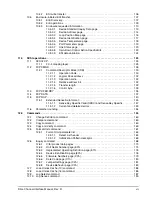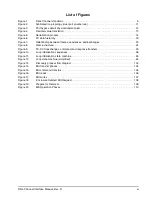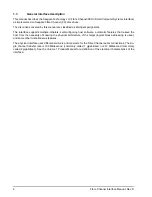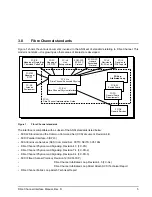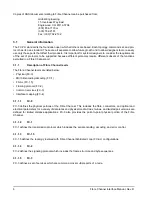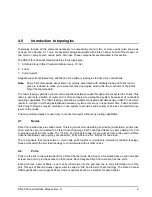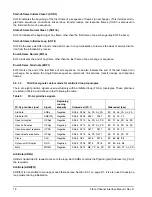
Fibre Channel Interface Manual, Rev. D
3
2.0
Introduction to Fibre Channel
Fibre Channel is an American National Standards Institute (ANSI) interface that acts as a general transport
vehicle to simultaneously deliver the command sets of several existing interface protocols including SCSI-3,
IPI-3, HIPPI-FP, IP, and ATM/AAL5. Proprietary and other command sets may also use and share the Fibre
Channel, but these are not yet defined as part of the Fibre Channel standard.
Fibre Channel Arbitrated Loop (FC-AL) is one topology used to connect two or more devices within the guide-
lines set by the ANSI standards. This topology is discussed in detail throughout this manual. Other topologies
do exist and are discussed briefly in this manual to give you some idea of how these topologies can coexist
and interact.
2.1
General information
Fibre Channel supports both large and small data transfers. This makes it effective in transferring a wide vari-
ety of data and can be used in systems ranging from supercomputers to individual workstations. Fibre Channel
peripherals can include devices such as, but not limited to, disc drives, tape units, high-bandwidth graphics ter-
minals, and laser printers.
To accommodate all of these device types with various command sets, Fibre Channel separates the physical I/
O interface from the I/O operations. This makes it possible to use the multiple command sets simultaneously.
This also allows new speeds and new functions to be added without making all previous investment in existing
components obsolete.
Another benefit of Fibre Channel is that it supports both channel and network peripheral protocols for device
communication. This means that channel and network protocols can share the same physical medium.
Fibre Channel does not have its own native I/O command set protocol. It simply lets other protocols superim-
pose their command sets onto itself and then transports this information. Fibre Channel has a command set
that it uses to manage the links between the various participating devices using Fibre Channel. Fibre Channel
calls these link level functions “link services.”
Since multiple command sets may use Fibre Channel, it identifies the information by command set type. This
allows the receiving port to distinguish among the protocols and make processing decisions. Each Fibre Chan-
nel frame has a field in the frame header to identify the protocol associated with that frame. Additional informa-
tion about frames is available in Section 6.0 beginning on page 23.
2.2
Channels vs. networks
As mentioned above, Fibre Channel supports both channel and network communications.
Channels
Traditional disc drive communications occur in a channel environment where the host controls the devices
attached to it. The primary requirement for channel environments is to provide error-free delivery, with transfer
delays being a secondary consideration.
Summary of Contents for 77767496
Page 1: ...Fibre Channel Interface ...
Page 2: ......
Page 3: ...Fibre Channel Interface ...
Page 6: ......
Page 14: ...xii Fibre Channel Interface Manual Rev D ...
Page 22: ...8 Fibre Channel Interface Manual Rev D ...
Page 36: ...22 Fibre Channel Interface Manual Rev D ...
Page 406: ...392 Fibre Channel Interface Manual Rev D ...
Page 431: ......






